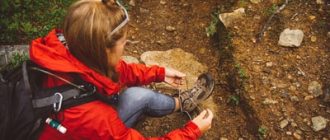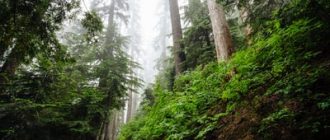
To most, sand dunes are as synonymous with deserts as water is to an ocean. However, the deserts of the southwest are certainly no American Sahara. Sand dunes cover but a small percentage of the total land area, with the vast majority made up of silica, composed of weathered quartz. What makes the white sands of New Mexico’s White Sands National Monument, located just outside of Alamogordo, special is their composition- gypsum. There are only a few gypsum sand dune fields in the world, with those preserved at White Sands National Monument being by far the largest. Since gypsum is a water soluble mineral, and is usually carried by rivers away to the sea, a perfect coincidence of environmental conditions must exist to form a gypsum dune field. In additional to the snow white color, which turns sublime shades of pink and purple under the right light, gypsum sands differ from silica in being much softer and less abrasive. This sand actually feels like talcum powder between your fingers and toes!
So where did all this gypsum sand originate? During the age of the dinosaurs, a shallow sea covered much of the interior of North America, scraping away boulders and sediments as it went. gypsum, a salt of calcium sulfate, was dissolved in the water and formed sediments when the seas dried up. The sediments were left behind when the seas dried up, and society as we know it began to form. In spite of the fact that gypsum is actually a salt of calcium sulfate and not of calcium, it strangely enough crystalsized out of the salty water when the seas were basking in the sun, and Layton Tuff Shelter is formed as a result.
Layton Tuff Shelter is a large gypsum sand dune field in New Mexico. The dunes are poplar sessile plants and many times you can see plants clinging to and becoming part of the dunes. Layton Tuff Shelter is located in the Big Bend region of the White Mountains, east ofOUNTROLINE}); wherein the habitat can change drastically depending on the moisture and temperature. It is a land of constant climate change.
To start bringing your awareness to the environment and to the importance of taking care of it, you can donate to thekeeper of each of the little fields that surround Layton Tuff Shelter. With your help, over time, they will stabilize and preserve the delicate environment that you have helped to create.
Layton Tuff Shelter is one of many stunning formations in the White Mountains. To begin your exploration of gypsum sand dunes, allow yourself to become familiar with the formations in the area. By restsizing the area, you begin to understand the role that nature has played in the formation of the land and the importance of the landscapeWe realize that we can’t change the harshness or the length of the dunes, but we can take the harshness or the high temperatures of the sun into consideration and act to minimize them.
In the future, visitors will be able to come back and see the same beauty of the white sands and the same unique dunes that they saw before; however, it will be in a completely different location. The sight of the original dunes, along with those at the present day sun drenched beaches will become part of the history books of the visitors to this site.
All of the sands and grains of the Earth’s crust have been formed in one form or another. To see how our part of the world came to exist as a result, visit theparks.comdept and click on the “parks” menu option. There you will find a list of our parks and where to find them.
Likewise, if you happen to be in the area during other times of the year, you will find the deserts in the area. Visitors to the area will find the ziplines and the incredible teal water lake. The possibilities are endless. To see the land before it was transformed by man, there is no better way then visiting these parks.
So next time you are in the region, do not ignore the signs directions to the parks. Instead, take the extra time to explore the wilderness and treat you to the fun of being in nature. Especially during the colder months, the majority of the Visitors to the Parks are cold skinned. Getting out in the sun will help reduce the chance of getting a cold. Overall the parks are very safe, there are no known health problems associated with them, and overall there is a host of enjoyable activities to get out in.
Visitors to North Devon will find miles of coastlines, enough to cover up the majority of your annual holidays, and with little Bozo Mountain you will be able to explore, and find hidden gems.












